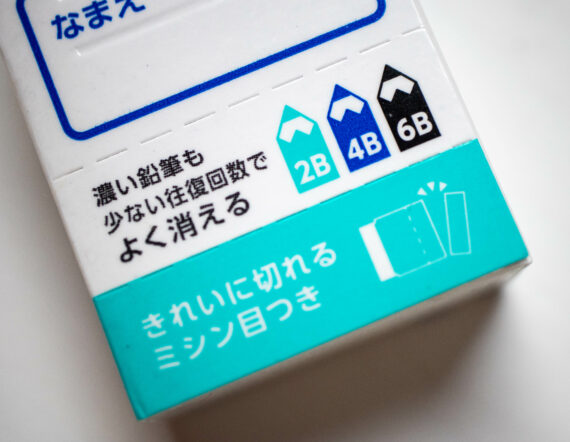Broken stationery surprise
Things can break – of course they can, but I was still surprised when a pen and an eraser, both not used much, broke.
Items can be ‘worn out’, but with good stationery you will usually have used up the item in question, or will have refilled it a few times, before that happens. Both items this blog post is about are from renowned manufacturers, so you don’t expect them to ‘wear out’ so soon.
Items can be misused, e.g. when excessive force is applied. The items in question were however treated carefully. The pen was always in a pen cup on my desk. It’s a pen cup I have used for many years, but that hasn’t been shown in the Pencil Pot of the Month series yet. The eraser has always been in a protected, padded compartment in the backpack I bring to work.
There can be manufacturing defects, but based on the reputation of the manufacturers and the specific mass-produced nature of the items that doesn’t seem likely.

The items in question are
- an eraser from Mono. This is the version without writing on the sleeve so that it is permissible in Japanese exams
- and a Schneider Slider Xite. One of the best looking and best writing ballpoint pens I know. The design is IMHO nearly on par with the uni-ball one. The uni-ball one is of course no ballpoint pen, but if we were to compare the look of the pens the uni-ball would only win narrowly because of the nicer clip and the matte plastic of the main body whereas the Schneider is produced with a less attractive glossy surface. Schneider’s Viscoglide ink is really great. If you haven’t tried it out yet, please consider doing so at the next opportunity.

Back to the topic of the two items breaking: The best explanation I can come up with is that there might be some sort of design or material flaw or the materials used got ‘exhausted’.

Please excuse the fibres / lint on the eraser ..nearly impossible to remove and based on the appearance the little fibres must be from my backpack. Why did it break? I’m not sure but my best guess is that at some point the eraser must have gotten a tiny crack that got bigger over time.

In the case of the Slider Xite I wonder if the biobased plastic is to blame on the early failure. As mentioned earlier, the pen was always in a pencil pot on my desk, so it shouldn’t have been exposed to any strong forces, e.g. during transportation. Interestingly enough the sticker on my pen says that the pen body is made from 90% biobased plastic. The current Schneider web site for the Slider Xite mentions however 70% biobased plastic in the pen body. Could it be that the plastic mix was changed because of issues with the plastic durability? Another hypothesis is that the pen was mishandled in the shop where and before I bought it ..and I didn’t notice until it was too late. In any case: some Sellotape stuck in the right place means that I will use this pen until the refill (original fill?) it came with will be used up.
Broken stationery surprise Read More »


























